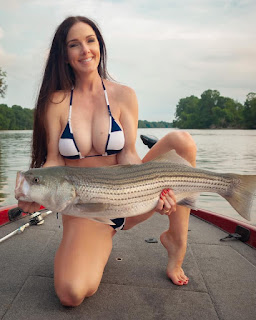Anglers will be barred at least until next year from catching the biggest Atlantic striped bass under an emergency measure intended to protect the popular but troubled fish while regulators grapple with next steps aimed at restoring its abundance.
The striped bass management board of the Atlantic States Marine Fisheries Commission — which regulates in-shore catches of migratory fish — agreed on Aug. 1 to extend the 31-inch size limit it had imposed in May.
That limit, originally scheduled to expire on Oct. 28, is to remain in effect for another year or until the board has replaced it with other conservation measures.
Striped bass, also known as rockfish, are one of the most sought-after sport and commercial fish in the Chesapeake Bay and along the mid-Atlantic coast. The commission has imposed tighter catch rules the last few years after scientists warned that they were being overfished and that numbers of adult female fish had fallen below what is needed to sustain the population. Scientists say catch-and-release fishing by anglers is killing many fish in summer when they are weakened by warm water temperatures and lower oxygen levels.
Despite other fishing restrictions imposed in 2020, the estimated recreational catch of striped bass coastwide nearly doubled in 2022 over the previous year’s tally. The commission took immediate emergency action in May while weighing further steps as scientists warned that the prospect for rebuilding the population by the end of the decade was fading.
They settled on the 31-inch limit as a way to reduce the harvest of striped bass spawned in 2015. That was the last bumper crop of the species and those fish are a critical component of the spawning population. The striped bass population has suffered weak reproduction the last four years.
The 31-inch limit mainly affects anglers fishing along the coast because striped bass that large spend most of the year roaming the Atlantic. They only enter the Chesapeake in spring to spawn, and most have returned to the ocean by May, when anglers can begin to catch striped bass in the Bay.
Sadly, until we actually get some substantially better than average years of recruitment, and enough time for those fish to mature (about 3 years), the fishable population of Stripers will continue to decline. That doesn't mean it will be impossible to fish for them, but you'll have to travel farther and farther to find those schools
The Wombat has Rule 5 Sunday: Potato On The Beach ready for prime time at the Other McCain.



No comments:
Post a Comment